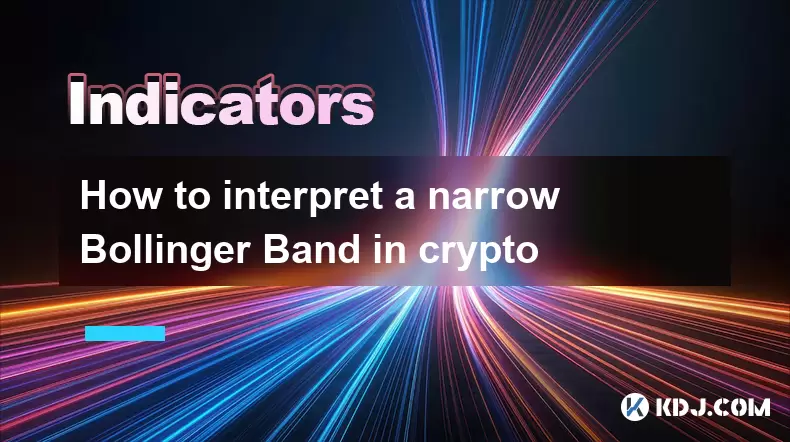-
 Bitcoin
Bitcoin $118100
0.44% -
 Ethereum
Ethereum $3765
5.84% -
 XRP
XRP $3.498
3.12% -
 Tether USDt
Tether USDt $1.000
0.00% -
 BNB
BNB $753.2
3.41% -
 Solana
Solana $181.7
3.58% -
 USDC
USDC $0.9999
0.01% -
 Dogecoin
Dogecoin $0.2704
12.75% -
 Cardano
Cardano $0.8684
5.85% -
 TRON
TRON $0.3151
-0.86% -
 Hyperliquid
Hyperliquid $46.06
4.51% -
 Stellar
Stellar $0.4695
2.48% -
 Sui
Sui $3.910
3.18% -
 Chainlink
Chainlink $19.36
6.65% -
 Hedera
Hedera $0.2750
3.99% -
 Bitcoin Cash
Bitcoin Cash $544.6
6.31% -
 Avalanche
Avalanche $25.12
3.69% -
 Shiba Inu
Shiba Inu $0.00001559
5.40% -
 Litecoin
Litecoin $116.8
5.10% -
 UNUS SED LEO
UNUS SED LEO $8.991
0.05% -
 Toncoin
Toncoin $3.283
2.79% -
 Polkadot
Polkadot $4.509
3.97% -
 Uniswap
Uniswap $10.67
6.58% -
 Ethena USDe
Ethena USDe $1.001
-0.01% -
 Monero
Monero $323.2
0.48% -
 Pepe
Pepe $0.00001410
6.37% -
 Bitget Token
Bitget Token $4.964
1.93% -
 Dai
Dai $0.9998
-0.01% -
 Aave
Aave $326.2
3.85% -
 Bittensor
Bittensor $421.8
2.46%
How to interpret a narrow Bollinger Band in crypto
A narrowing Bollinger Band in crypto signals low volatility and a potential breakout, often prompting traders to watch for price moves beyond the bands.
Jul 13, 2025 at 06:36 am

Understanding the Basics of Bollinger Bands
Bollinger Bands are a widely used technical analysis tool in the cryptocurrency market. They consist of three lines: a simple moving average (SMA) in the middle, and two outer bands that represent standard deviations above and below the SMA. These bands dynamically adjust to price volatility.
In crypto trading, where price swings can be dramatic, Bollinger Bands help traders assess whether an asset is overbought or oversold. The distance between the upper and lower bands reflects the current volatility of the asset. When this distance narrows, it signals a potential change in market behavior.
What Does a Narrow Bollinger Band Mean?
A narrowing of the Bollinger Bands, often referred to as the "squeeze," indicates that volatility is decreasing. This usually happens during periods of consolidation when the price moves within a tight range. In such cases, the standard deviation calculation results in smaller values, which causes the bands to contract toward the middle SMA line.
In the context of cryptocurrency, where sudden price surges or drops are common, a narrow Bollinger Band suggests that the market is currently quiet but may be preparing for a breakout. Traders pay close attention to this pattern because it often precedes significant price movements.
How to Identify a Squeeze on Crypto Charts
To spot a squeeze, you need to observe how the bands compress over time. Here's how to do it step-by-step:
- Open a charting platform like TradingView or Binance's native tools
- Apply the Bollinger Bands indicator with default settings (20-period SMA and 2 standard deviations)
- Look for moments when the upper and lower bands come very close together
- Confirm that volume has also decreased significantly during this period
This visual narrowing is crucial in identifying potential setups for breakout trading strategies. Many experienced crypto traders use this signal in combination with other indicators like Relative Strength Index (RSI) or Volume Profile to confirm the likelihood of a strong move.
What Happens After the Squeeze?
Once the Bollinger Bands have narrowed significantly, the next logical question is: what comes next? Typically, a breakout follows. However, the direction—whether upward or downward—is not predetermined. The squeeze only tells us that a sharp movement is likely, not its direction.
Traders often wait for a candlestick to close outside one of the bands to determine the breakout direction. If the price closes above the upper band, it could signal a bullish move. Conversely, a close below the lower band might indicate a bearish trend.
Some traders place pending orders just above the upper band and below the lower band to automatically enter a position once a breakout occurs. This method helps capture momentum early, especially in fast-moving crypto markets.
Combining Narrow Bollinger Bands with Other Indicators
Relying solely on Bollinger Bands can lead to false signals, particularly in sideways or choppy markets. To increase accuracy, consider combining them with:
- MACD (Moving Average Convergence Divergence) to detect momentum shifts
- Volume indicators to confirm if the breakout has strong participation
- Fibonacci retracement levels to identify key support and resistance areas
- Ichimoku Cloud for additional confirmation of trend strength
For example, if a narrow Bollinger Band appears near a key Fibonacci level and the MACD histogram starts expanding, it increases the probability of a successful trade setup.
Risks and Considerations in Crypto Trading
While the narrowing of Bollinger Bands offers valuable insights, it's important to manage expectations and risks. Crypto markets are highly volatile and influenced by external factors such as regulatory news, macroeconomic data, and exchange outages.
False breakouts are common, especially around major announcements or during low liquidity periods. Therefore, setting stop-loss orders and managing position sizes becomes critical when trading based on Bollinger Band squeezes.
Also, different cryptocurrencies may behave differently under similar patterns. For instance, Bitcoin (BTC) might show more reliable setups compared to altcoins, which can be more erratic due to lower liquidity.
Frequently Asked Questions
Q: Can I use Bollinger Bands on all timeframes in crypto trading?
Yes, Bollinger Bands can be applied across various timeframes—from 1-minute charts to weekly charts. However, higher timeframes tend to offer more reliable signals due to reduced noise and increased trader participation.
Q: Should I always trade when the Bollinger Bands narrow?
No, a narrowing alone is not sufficient to justify a trade. It must be combined with other forms of confluence such as volume spikes, key levels, or momentum indicators. Trading without confirmation increases the risk of losses.
Q: How does the Bollinger Band compare to the Keltner Channel?
Both tools measure volatility, but they use different calculations. Bollinger Bands use standard deviation, while Keltner Channels rely on the Average True Range (ATR). Some traders combine both to get a clearer picture of volatility compression and expansion.
Q: What time frame is best for spotting Bollinger Band squeezes in crypto?
The 4-hour and daily charts are preferred by many traders for identifying meaningful squeezes. These timeframes filter out short-term noise and align better with institutional activity, making the signals more robust.
Disclaimer:info@kdj.com
The information provided is not trading advice. kdj.com does not assume any responsibility for any investments made based on the information provided in this article. Cryptocurrencies are highly volatile and it is highly recommended that you invest with caution after thorough research!
If you believe that the content used on this website infringes your copyright, please contact us immediately (info@kdj.com) and we will delete it promptly.
- Crypto & Institutions in July 2025: What's the Hype?
- 2025-07-21 04:30:12
- Pepeto, DOGE, SHIB Prices: What's Hot and What's Not in the Meme Coin Mania
- 2025-07-21 04:30:12
- Bitcoin Bulls Eye $125K Breakout: Is the Digital Gold Rush Back On?
- 2025-07-21 05:10:12
- Decrypting Crypto: Bitcoin's Real-World Utility and the Future of Finance
- 2025-07-21 05:15:12
- Tezos Price Surge: XTZ Prediction & What's Behind the Massive Net Inflows
- 2025-07-21 05:20:12
- Uniswap (UNI) Price Prediction: Bullish Breakout and Market Cap Momentum
- 2025-07-21 05:25:12
Related knowledge

Advanced RSI strategies for crypto
Jul 13,2025 at 11:01am
Understanding the Basics of RSI in Cryptocurrency TradingThe Relative Strength Index (RSI) is a momentum oscillator used to measure the speed and chan...

Crypto RSI for day trading
Jul 12,2025 at 11:14am
Understanding RSI in the Context of Cryptocurrency TradingThe Relative Strength Index (RSI) is a momentum oscillator used to measure the speed and cha...

Crypto RSI for scalping
Jul 12,2025 at 11:00pm
Understanding RSI in the Context of Crypto TradingThe Relative Strength Index (RSI) is a momentum oscillator widely used by traders to measure the spe...

What does an RSI of 30 mean in crypto
Jul 15,2025 at 07:07pm
Understanding RSI in Cryptocurrency TradingRelative Strength Index (RSI) is a momentum oscillator widely used in cryptocurrency trading to measure the...

What does an RSI of 70 mean in crypto
Jul 13,2025 at 06:07pm
Understanding the RSI Indicator in Cryptocurrency TradingThe Relative Strength Index (RSI) is a widely used technical analysis tool that helps traders...

Does RSI work in a bear market for crypto
Jul 16,2025 at 01:36pm
Understanding RSI in Cryptocurrency TradingThe Relative Strength Index (RSI) is a momentum oscillator used by traders to measure the speed and change ...

Advanced RSI strategies for crypto
Jul 13,2025 at 11:01am
Understanding the Basics of RSI in Cryptocurrency TradingThe Relative Strength Index (RSI) is a momentum oscillator used to measure the speed and chan...

Crypto RSI for day trading
Jul 12,2025 at 11:14am
Understanding RSI in the Context of Cryptocurrency TradingThe Relative Strength Index (RSI) is a momentum oscillator used to measure the speed and cha...

Crypto RSI for scalping
Jul 12,2025 at 11:00pm
Understanding RSI in the Context of Crypto TradingThe Relative Strength Index (RSI) is a momentum oscillator widely used by traders to measure the spe...

What does an RSI of 30 mean in crypto
Jul 15,2025 at 07:07pm
Understanding RSI in Cryptocurrency TradingRelative Strength Index (RSI) is a momentum oscillator widely used in cryptocurrency trading to measure the...

What does an RSI of 70 mean in crypto
Jul 13,2025 at 06:07pm
Understanding the RSI Indicator in Cryptocurrency TradingThe Relative Strength Index (RSI) is a widely used technical analysis tool that helps traders...

Does RSI work in a bear market for crypto
Jul 16,2025 at 01:36pm
Understanding RSI in Cryptocurrency TradingThe Relative Strength Index (RSI) is a momentum oscillator used by traders to measure the speed and change ...
See all articles

























































































